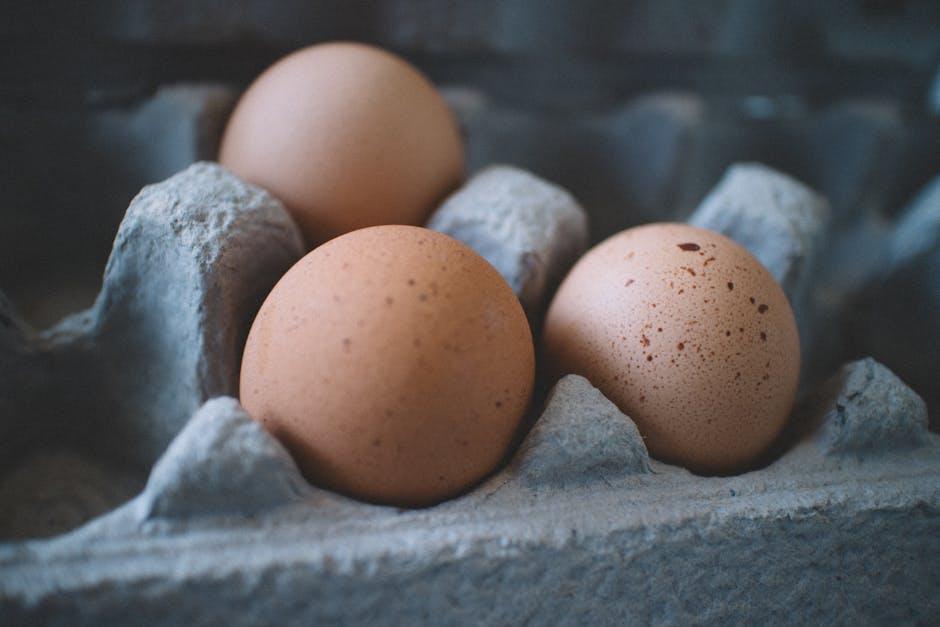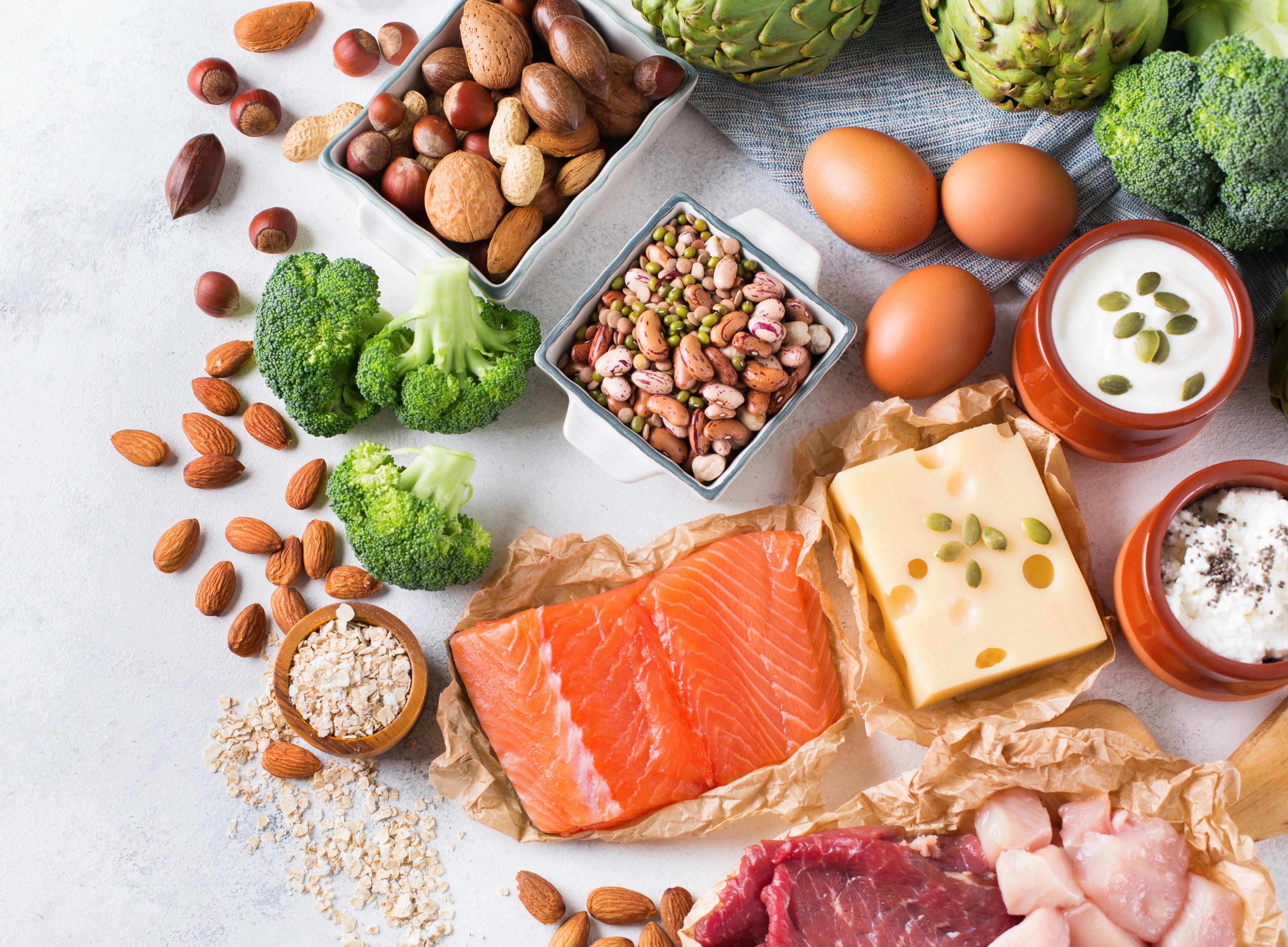Table of Contents
- Benefits of Protein-Rich Foods for Overall Health
- Top Sources of Protein for Every Dietary Preference
- How to Incorporate More Protein into Your Daily Meals
- The Role of Protein in Muscle Building and Recovery
- Delicious High-Protein Snacks to Fuel Your Day
- Q&A
- The Conclusion


Benefits of Protein-Rich Foods for Overall Health
Incorporating protein-rich foods into your diet boasts a multitude of benefits that significantly enhance overall health. Protein plays a crucial role in building and repairing tissues, making it essential for muscle growth and recovery. This macronutrient also supports the production of important enzymes and hormones, contributing to a well-functioning metabolism. Additionally, consuming adequate protein can aid in maintaining a healthy weight, as it promotes feelings of fullness, reducing the likelihood of overeating.
Moreover, a high-protein diet has been linked to improved bone health. Studies suggest that individuals who consume sufficient protein may have a lower risk of fractures and osteoporosis, particularly as they age. Protein-rich foods like dairy products, legumes, and lean meats provide not only protein but also vital nutrients such as calcium and phosphorus, which are essential for strong bones. Incorporating these foods can help ensure optimal skeletal health throughout your life.
Furthermore, protein assists with immune function. When the body faces infections or injuries, it requires proteins to produce antibodies that fight off diseases and promote healing. Foods abundant in protein also contain essential amino acids that contribute to the synthesis of immune cells. This makes a protein-inclusive diet a wise choice for bolstering your body’s defense mechanisms. Rich sources of protein include:
- Lean meats (chicken, turkey)
- Fish and seafood
- Eggs
- Dairy products (yogurt, cheese)
- Beans and legumes (lentils, chickpeas)
- Nuts and seeds (almonds, chia seeds)
| Food Item | Protein Content (per 100g) |
|---|---|
| Chicken Breast | 31g |
| Salmon | 25g |
| Greek Yogurt | 10g |
| Lentils | 9g |
| Almonds | 21g |
By selecting a variety of these protein sources, you can maximize the health benefits they offer, ensuring your body receives the essential nutrients it needs for optimal function.


Top Sources of Protein for Every Dietary Preference
When it comes to fueling our bodies with protein, variety is key to meet different dietary preferences. For those following a traditional omnivorous diet, options abound. Chicken, turkey, and lean cuts of beef are exceptional sources that provide high-quality protein, essential for muscle recovery and overall health. Fish such as salmon and tuna not only offer protein but are also packed with omega-3 fatty acids, which are beneficial for heart health.
For vegetarians, the protein landscape is equally diverse. Legumes, including lentils and chickpeas, serve as fantastic protein-rich options that can be incorporated into salads, soups, or stews. Additionally, quinoa and tofu stand out as versatile ingredients. Quinoa, a complete protein, is perfect for salads or as a side dish, while tofu can absorb flavors and be used in stir-fries or grilled dishes, making it a staple in many vegetarian diets.
Vegans can also enjoy a wealth of protein sources without animal products. Nuts and seeds such as almonds, chia seeds, and hemp seeds are excellent for snacking or adding a protein punch to smoothies. Furthermore, plant-based protein powders, such as pea or brown rice protein, can be a convenient addition to shakes and baked goods. To illustrate these options, the table below provides a quick reference of protein content across various sources:
| Food Source | Protein Content (per 100g) |
|---|---|
| Chicken Breast | 31g |
| Quinoa | 4g |
| Lentils | 9g |
| Tofu | 8g |
| Almonds | 21g |


How to Incorporate More Protein into Your Daily Meals
Incorporating protein into your daily meals can be both delicious and simple. Start by integrating lean meats and poultry into your lunch and dinner. Grilled chicken, turkey, and fish not only provide ample protein but are also versatile enough to pair with various sides like quinoa, brown rice, or vegetables. Consider swapping beef for turkey in your favorite recipes, such as tacos or spaghetti sauce, to boost protein content while reducing fat.
Another great way to enhance your protein intake is through plant-based options. Foods such as lentils, chickpeas, and quinoa can be excellent additions to salads, soups, or stir-fries. Additionally, don’t underestimate the power of nuts and seeds—snacking on almonds or incorporating chia seeds into smoothies can significantly increase your protein levels without much effort. Here are a few plant-based protein sources worth adding to your grocery list:
- Lentils - 18g of protein per cooked cup
- Chickpeas – 15g of protein per cooked cup
- Quinoa – 8g of protein per cooked cup
- Almonds – 6g of protein per ounce
- Chia Seeds – 5g of protein per ounce
Don’t forget about the power of dairy and dairy alternatives for protein enhancement. Greek yogurt, cottage cheese, and milk can be excellent side dishes or snacks that elevate your protein intake without being overly filling. If you are lactose intolerant or prefer plant-based options, consider fortified almond, soy, or oat milk, which often contain added protein. Below is a brief comparison table to help you visualize the protein content of various dairy options:
| Food Item | Protein (g per serving) |
|---|---|
| Greek Yogurt (1 cup) | 20g |
| Cottage Cheese (1 cup) | 25g |
| Almond Milk (1 cup) | 1g |
| Soy Milk (1 cup) | 7g |
| Whole Milk (1 cup) | 8g |


The Role of Protein in Muscle Building and Recovery
Protein plays a pivotal role in the intricate process of muscle building and recovery. When you engage in strength training or intense physical activities, tiny tears occur in your muscle fibers. The body responds by repairing these tears, and this is where protein comes into play. It provides the essential amino acids needed for muscle repair, synthesis, and growth. Without adequate protein intake, the muscle repair process can be hindered, leading to slower recovery and potentially stunted muscle growth.
To effectively support your muscle-building endeavors, it’s important to consider the sources of protein you consume. Some of the best protein-rich foods include:
- Lean meats: Chicken, turkey, and lean cuts of beef
- Fish: Salmon, tuna, and sardines
- Dairy: Greek yogurt, milk, and cottage cheese
- Legumes and pulses: Lentils, chickpeas, and black beans
- Nuts and seeds: Almonds, chia seeds, and hemp seeds
Incorporating these sources into your diet not only boosts your protein intake but also brings a variety of other nutrients crucial for overall health. The timing of protein consumption plays an important role too. Consuming protein-rich foods soon after a workout can maximize muscle recovery and promote muscle growth. Pairing protein with carbohydrates can enhance glycogen replenishment in muscles, further assisting recovery. Aim to include a source of protein in every meal to help ensure your body has what it needs to rebuild stronger after every workout.


Delicious High-Protein Snacks to Fuel Your Day
Incorporating high-protein snacks into your daily routine can significantly boost your energy levels and help you stay satisfied between meals. Look no further than these delicious options that not only taste great but also pack a substantial protein punch. Whether you’re on the go or taking a moment to relax, these snacks can keep you munching while nourishing your body.
- Greek Yogurt Parfait: Layer Greek yogurt with fresh berries and a sprinkle of granola or nuts. This delightful treat is rich in protein and antioxidants, making it a perfect start to your day or a midday pick-me-up.
- Hummus and Veggies: Pair creamy hummus made from chickpeas with a colorful array of fresh vegetables like carrots, bell peppers, and cucumbers. Not only do you get the benefits of fiber and vitamins, but the chickpeas offer a nice protein boost as well.
- Nut Butter and Rice Cakes: Spread almond or peanut butter on whole grain rice cakes for a satisfying crunch. Add banana slices for natural sweetness and an extra dose of nutrients.
For those who prefer a savory option, consider preparing simple protein-packed bites. These can act as an excellent source of nutrition while satisfying cravings without reaching for unhealthy snacks. Here are some ideas:
| Snack | Protein (g) | Serving Size |
|---|---|---|
| Edamame | 17 | 1 cup |
| Beef Jerky | 11 | 1 oz |
| Cottage Cheese | 28 | 1 cup |
| Hard-Boiled Eggs | 6 | 1 large |
These snacks offer not just a boost of protein but also contribute to a satisfying diet that keeps you active and alert. Experiment with combinations that excite your palate while fulfilling your nutritional needs. The key to maintaining energy levels throughout the day lies in the smart choices we make during snack time. So, stock your kitchen with these high-protein delights to keep your cravings in check.
Q&A
Q&A: Understanding Protein-Rich Foods
Q1: What is protein, and why is it important?
A1: Protein is one of the three macronutrients essential for our bodies, alongside carbohydrates and fats. It plays a critical role in building and repairing tissues, supports immune function, and is vital for producing enzymes and hormones. Including sufficient protein in your diet helps maintain muscle mass, promotes satiety, and contributes to overall health.Q2: What are some common foods high in protein?
A2: A variety of foods offer a rich source of protein. Here are some great options:- Animal-based sources: Chicken, turkey, beef, fish, eggs, and dairy products like Greek yogurt and cottage cheese.
- Plant-based sources: Legumes (such as lentils, beans, and chickpeas), nuts, seeds, tofu, tempeh, and whole grains (like quinoa and farro) are excellent vegetarian and vegan alternatives.
Q3: How much protein do I need daily?
A3: Protein needs can vary depending on factors like age, activity level, and health goals. However, a general guideline suggests that adults should aim for about 46 grams per day for women and 56 grams for men. Active individuals or those looking to build muscle may require more—typically 1.2 to 2.0 grams of protein per kilogram of body weight.Q4: Can I get enough protein from a vegetarian or vegan diet?
A4: Absolutely! Many plant-based foods provide ample protein. Incorporating a variety of legumes, whole grains, nuts, seeds, and soy products into your meals ensures you meet your protein needs. Combining different protein sources can also enhance the amino acid profile and improve nutritional balance.Q5: Are all proteins the same?
A5: No, not all proteins are created equal. Proteins are made up of smaller units called amino acids, some of which are essential and must be obtained through diet. Animal-based proteins generally provide all essential amino acids (known as complete proteins), while many plant-based proteins are considered incomplete. However, by eating a diverse range of plant foods, you can easily obtain all necessary amino acids.Q6: How can I easily incorporate more protein into my meals?
A6: Here are a few simple tips to boost your protein intake:- Breakfast: Start your day with a protein-rich meal, such as Greek yogurt with nuts or a smoothie with protein powder.
- Snacks: Choose snacks high in protein, like hard-boiled eggs, hummus with veggies, or a handful of mixed nuts.
- Lunch/Dinner: Add beans, lentils, or tofu to salads, and choose lean meats or fish as your main protein source. Whole grains like quinoa can also up your protein game.
Q7: Are there any risks associated with high protein diets?
A7: While protein is essential, consuming very high amounts may not be suitable for everyone, particularly those with certain health conditions, like kidney problems. It’s important to maintain a balanced diet that includes adequate fruits, vegetables, and whole grains alongside protein. Consult a healthcare professional or registered dietitian for personalized advice.Q8: What are some creative ways to cook protein-rich foods?
A8: Getting creative in the kitchen can make your protein-rich meals exciting! Try marinating and grilling chicken or fish for added flavor, making legumes the star of a hearty stew, or baking chickpeas for a crunchy snack. For plant-based options, experiment with spices in stir-fries or create veggie burgers using black beans or lentils for a satisfying meal.Q9: Are protein supplements necessary for everyone?
A9: Protein supplements, such as powders and bars, can be convenient but are not required for everyone. Most individuals can meet their protein needs through a well-rounded diet. However, athletes or those with specific dietary restrictions might find supplements beneficial. Always consider whole food sources first before resorting to supplements.Q10: How do I know if I’m getting enough protein?
A10: Signs that you might not be getting enough protein include fatigue, muscle weakness, and frequent infections. Keeping track of your food intake can help ensure you’re meeting your protein goals. If you have concerns, consider consulting a healthcare provider or a registered dietitian for guidance tailored to your needs.This Q&A section aims to clarify key aspects of protein-rich foods while offering practical tips and insights that encourage readers to consider their dietary choices around protein consumption.




0 Comments